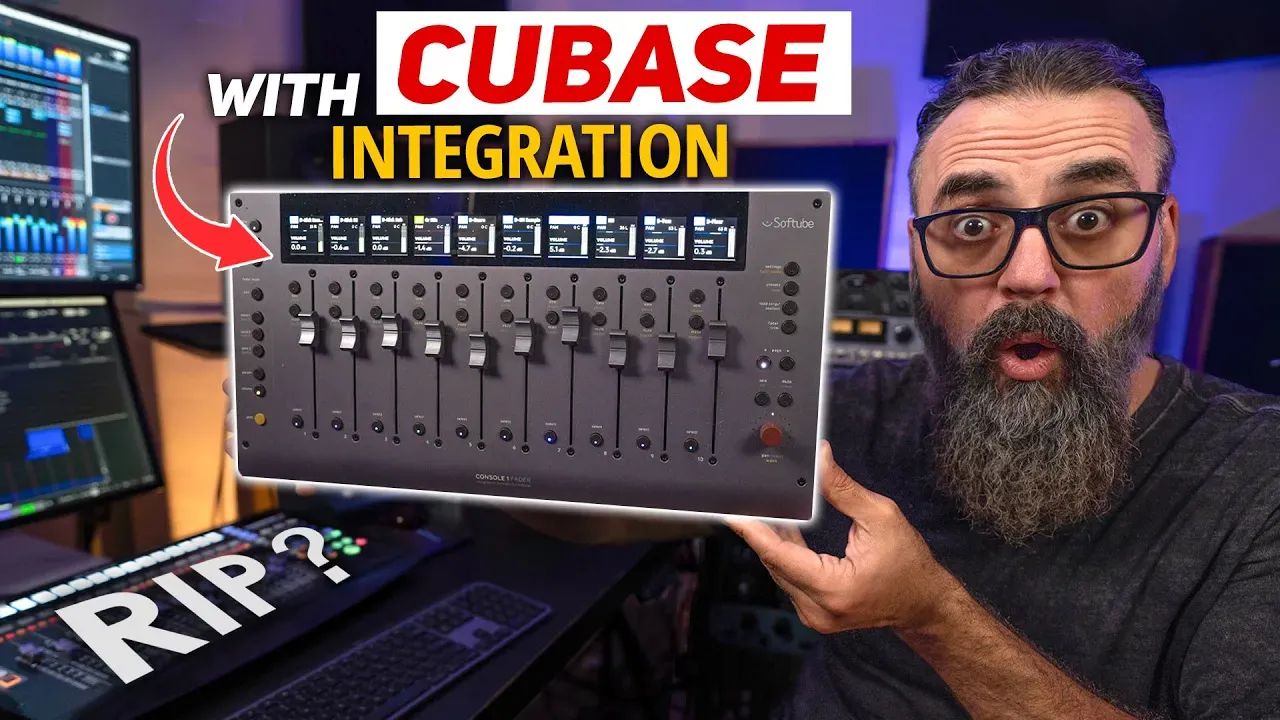
Can the Softube FADER MK3 Replace my Beloved Faderport 16?
Click HERE to Watch the YouTube Video
As someone who’s used the PreSonus Faderport 16 for nearly five years, I was curious when I got my hands on the Softube Console 1 Fader MkII. With only 10 faders compared to the Faderport’s 16, I wondered: could this new device really take over as my main controller in the studio? After weeks of testing, particularly with Cubase, I’m ready to share my thoughts on the Console 1 Fader and whether it can replace my trusty Faderport.
First Impressions: A Compact, Efficient Controller
The Softube Console 1 Fader MkII features 10 touch-sensitive, responsive faders, offering a smooth experience right out of the box. While the Faderport 16 boasts more faders, I found the 10 on the Console 1 Fader to be more than enough for my workflow.
What immediately impressed me was the fader modes: you can adjust not just volume, but also send levels and panning, all from the faders themselves. For instance, I was able to control sends up to six slots simply by toggling through them, and switching to pan mode was seamless. The Console 1 Fader also features a helpful "dent" at unity gain (0dB), so you can physically feel when you've reached the sweet spot—a nice touch!
The Power of Cubase Integration
One of the biggest advantages of the Console 1 Fader MkII is its tight integration with Cubase, thanks to the Cubase Media Remote API. Unlike other DAWs where you might need to insert the Console 1 plugin on every channel, in Cubase, the integration is nearly seamless. I could select channels directly from the DAW, and the controller instantly reflected the changes, even if the channels weren’t on the current fader page. The fader's display also matched the color coding of my Cubase session, making it easy to identify which channel I was controlling.
Setting up the Console 1 Fader with Cubase was simple—just a few clicks in the Studio Setup, and it was ready to go. While the integration is still in beta, the current performance was solid. However, there is a limitation: the Console 1 Fader can only control up to 100 tracks. If you go beyond that, selecting a channel over track 100 resets the fader to channel 1. This is something I hope Softube addresses in future updates.
What's Missing: No Transport Controls
If there’s one area where the Faderport 16 has an advantage, it’s the transport controls. The Console 1 Fader doesn’t have play, stop, or record buttons, which might be a dealbreaker for some users. I’ve adapted by using my Monogram CC controller for transport duties, but it’s still an adjustment, especially since I’m used to controlling playback with my right hand.
Final Thoughts: Will I Replace My Faderport 16?
Despite the missing transport controls, the Console 1 Fader MkII is staying on my desk. Its compact size, superior integration with Cubase, and beautiful display make it a great fit for my setup. While the Faderport 16 is still a fantastic controller, the convenience of the Console 1 Fader’s Cubase integration, coupled with its smooth operation and smaller footprint, won me over.
For Cubase users in particular, this controller is a game-changer. However, if you rely heavily on transport controls or work with over 100 tracks regularly, the Faderport 16 might still have the edge for you. Let me know in the comments if you'd like to see more details about how I integrate the Console 1 Fader into my workflow!
What Do You Think? Do you use a DAW controller? Which one do you prefer, and why? I’d love to hear your thoughts in the comments. If you're curious about the rest of my setup, check out my other reviews or leave a comment if you want a deeper dive into my studio gear!
Until next time, happy mixing!
